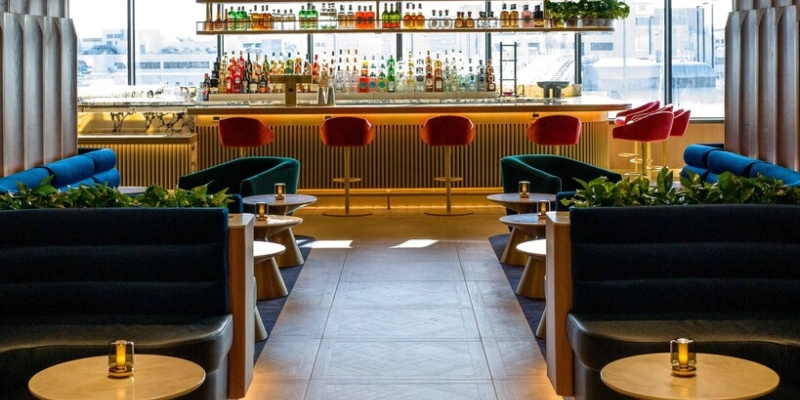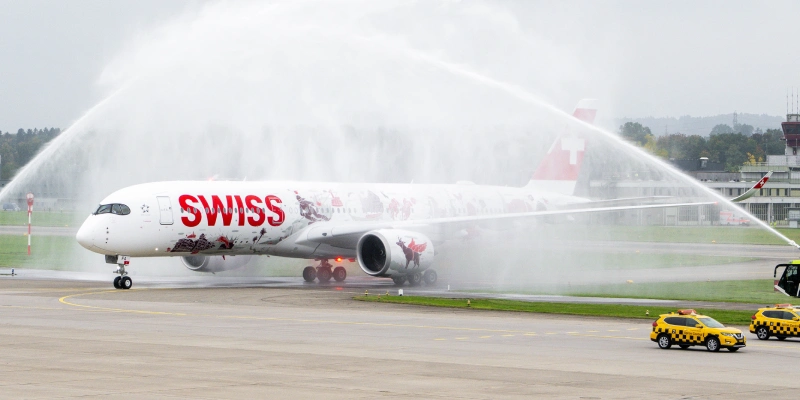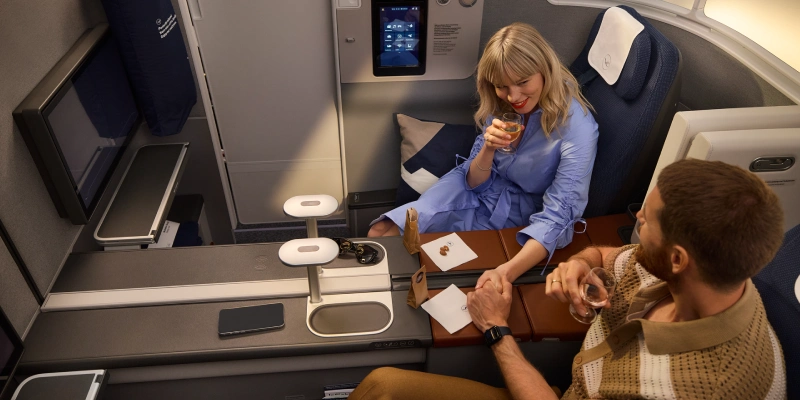Unique and customisable cabin lighting inspired by the colours of the Australian landscape and grounded in science will feature on Qantas’ upcoming Project Sunrise ultra-long-haul flights to help minimise jetlag and improve passengers wellbeing.
The design is a result of more than 150 hours of testing in the Airbus Customer Definition Centre in Hamburg where representatives from Qantas, Airbus, the University of Sydney’s Charles Perkins Centre and Caon Design Office created and tested hundreds of lighting patterns and sequences in an Airbus A350 cabin mockup.
Qantas and the Charles Perkins Centre last year released preliminary findings on how to potentially reduce the impacts of jetlag by reshaping the inflight travel experience, based on world-first research conducted during test flights for Qantas’ Project Sunrise program.
Based on state-of-the-art modelling of circadian rhythms, the Charles Perkins Centre advised the optimal spectral irradiances for light to promote circadian adaption, sleep, and wake. These were implemented and tested throughout the lighting workshops in Hamburg and adjusted for eye comfort and appearance.
→ Qatar Airways looking to buy up to 20% stake in Virgin Australia
The lighting sequence will be tailored to help passengers adjust to their destination time zone before they set foot on the ground.
The trial has produced a series of 12 unique lighting scenes specifically for the Project Sunrise flights, including:
- “Awake”: Broad-spectrum, blue-enriched lighting to help customers adjust to the destination time zone and help them stay awake; a softer version is available for crew to choose based on cabin mood and ambience.
- “Sunset”: An immersive transition from a daytime mode into dark that moves through the colours of a sunset into a night sky with moonlight and slow cloud effect to relax customers and prepare them for sleep.
- “Sunrise”: Dynamic lighting effective for a transition from night to day that replicates an Australian sunrise rolling from the front of the cabin to the rear.
The main cabin will also have Welcome and Farewell lighting scenes for boarding and disembarking, as well as tailored scenes for taxi, take-off and landing, and sleep.
The Wellbeing Zone will feature soft blue-enriched light creating a daytime sky effect with slow-moving clouds during ‘the day’ to keep customers awake, and a moonlight inspired scene with reflections of water rippling to relax customers who spend time in the Wellbeing Zone while the rest of the cabin is in a dark period.
In a first for the airline, the six enclosed First Suites will offer a fully customisable lighting sequence for their environment that means customers can choose the time zone they want to be on for the duration of the flight.
Qantas International CEO Cam Wallace said that the scientifically informed lighting design was another critical component of the preparation for Project Sunrise flights, which will connect Australia’s east coast non-stop with London and New York.
“These world-first flights have been an opportunity for us to work with experts and build on our experience of long-haul flying to rethink the inflight experience with a focus on customer wellbeing and combating the effects of jetlag”.
“One of the things that was clear from the research is the importance of light cycles and brightness in setting the body clock and that was the basis of this testing”, Wallace said.
Related Topics
British Airways Introduces New VIP Lounge Concept with Openings in Miami and Dubai
SWISS’s First Airbus A350 Lands in Zurich, Marking a New Era for Airline
Lufthansa Debuts New Allegris Cabin on Flights from Frankfurt to Toronto, Rio de Janeiro, Bogotá, Hyderabad, and Austin
United Airlines Strengthens Transatlantic Leadership with Flights to New Cities in Croatia, Italy, Scotland, and Spain for Summer 2026

Plataforma Informativa de Aviación Comercial con 13 años de trayectoria.




